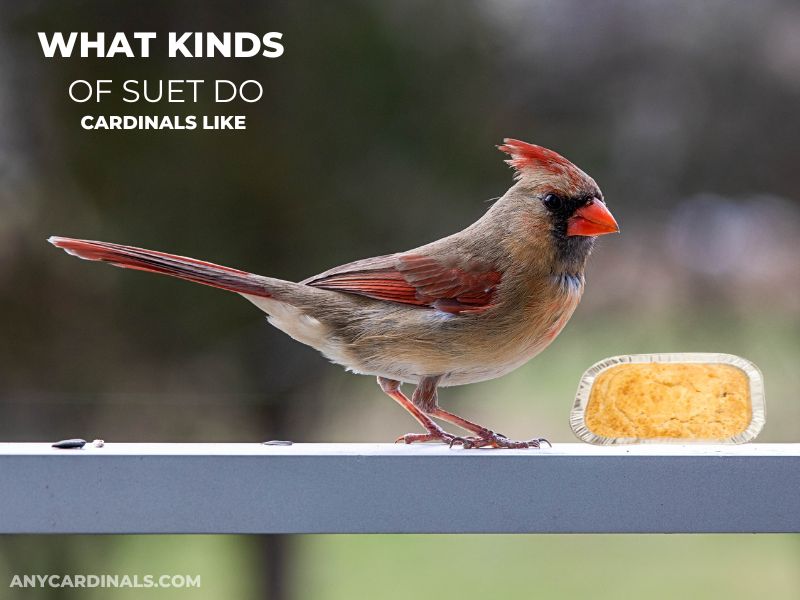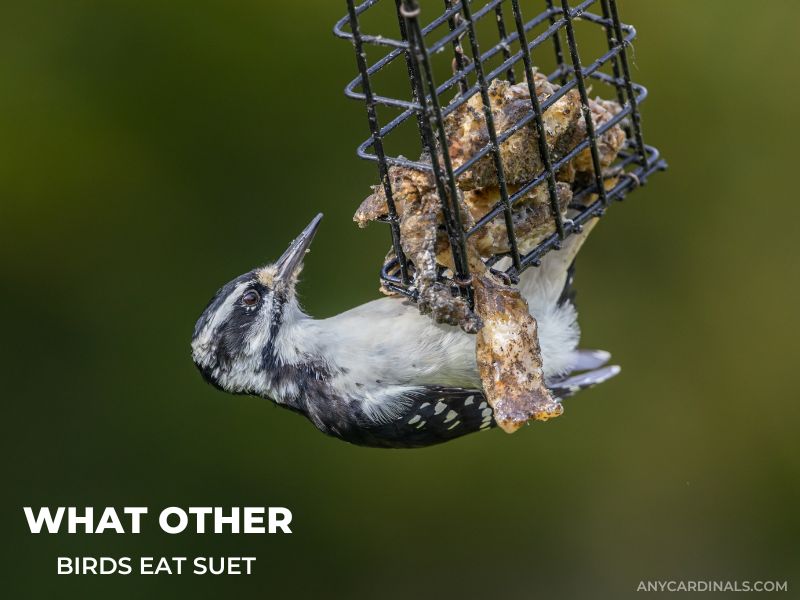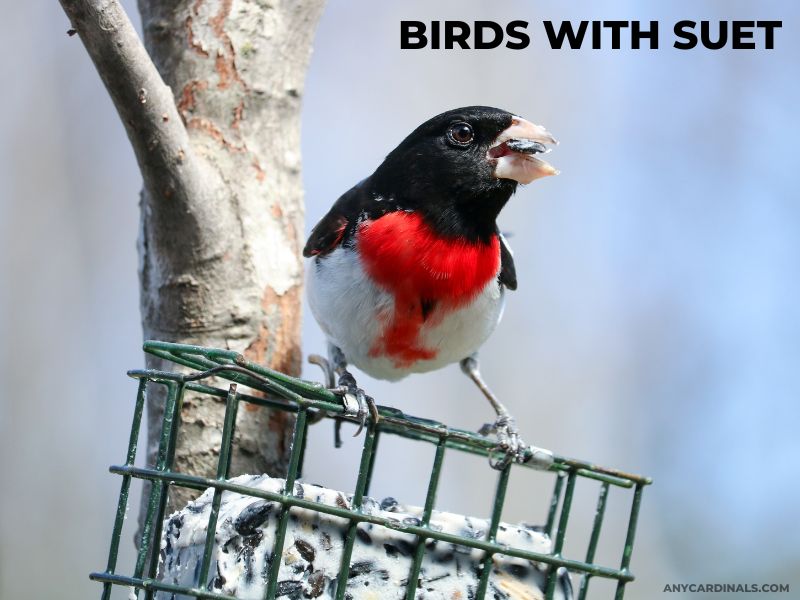Do Cardinals Eat Suet?
Cardinals are famous for their plumage, but their diet entices many ornithologists more.
Yeah, the cardinals’ diet baffles many people and makes them wonder about a question like do cardinals eat suet? cardinals consume suet but don’t heavily feed on this food. They tend to nibble a small chunk of suet, mainly during the winter.
But do you know whether baby cardinals eat suet or not? Or do you know what other birds consume suet alongside cardinals? If you don’t, you may keep reading this content. Let’s dive in.

Read related articles about cardinal food and diet:
Do Baby Cardinals Eat Suet?
Usually, baby cardinals don’t eat suet until their parents feed them. These hatchlings tend to eat soft insects and bugs. But when they age and leave the nest being juveniles, they may eat suet after finding any in bird feeders.
Hence, we can say that baby cardinals don’t often get the opportunity to eat suet, and they consume this food when a birder like you feed them, or their parents bring it to the nests.
What Kinds Of Suet Do Cardinals Like?
In essence, cardinals prefer eating all suet types. If you mix seed, mealworm, or fruit with suet, these birdies will happily gobble the food.

However, cardinals love devouring suet mixed with sunflower seeds. Also, they prefer consuming suet with generic seed mixes. You can keep those birds around your backyard for a prolonged period if you can mix suet with mealworms or other insects.
What Other Birds Eat Suet?
Numerous birds eat suet, but you can often encounter specific birds nibbling suet from bird feeders. Those birdies are as follows:

- Woodpeckers
- Tits
- Nuthatches
- Chickadees
- Wrens
- Thrushes
- Grosbeaks
- Orioles
- Blackbirds
- Jays And More.
In addition to these birdies, yellow-rumped warblers also love eating suet, plus several sparrow species like tanagers and band buntings occasionally consume suet. Some small hawks prefer gobbling suet, such as the red-shouldered hawk and Cooper’s hawk.
So, cardinals aren’t the only bird species that consume suet. Anyway, this was all for the question-answer section; now, let’s disclose how you can prepare suet at home and attract more cardinals to your yards with suet in the following section of this article. Let’s begin.
How To Make Suet At Home: Follow The Simple Yet Effective Steps
Learning about the preparation process of homemade suet can save you and a bit of your penny if you don’t wanna purchase the best-quality suet cakes or balls online or from the local market.

That stated, below, we have shared some easy steps to follow to prepare your suet cakes for cardinals within a short period.
Step-1:
First, cut the animal fat and grind up the fat using the best meat grinder. Here’s one thing you should note: you can choose any animal’s fat based on your preference, but no matter which animal fat you use, ensure it doesn’t come with any bone.
Step-2:
After grinding the fat:
- Place it on a pot and keep the pot on the cooktop.
- Give the fat some time to get melted.
- While heating the fat, ensure you keep the flame low.
Step-3:
Now, it’s fat-straining time; you must strain the melted fat with a mesh strainer or clean cloth. By straining, you can remove all the fat’s impurities and ensure cardinals get the best-quality suet.
We recommend following the straining process a couple of times, and after a certain period, you need to reheat the fat if you notice the fat gets congealed at the time of straining.
Step-4:
It’s an additional step that you can choose to follow or ignore. This method is all about adding flavor to suet by mixing it with ingredients that cardinals love.
And to do that, you can mix sunflower seeds, dried fruits, peanut butter, cornmeal, mealworms or other insects with your homemade suet.
After mixing the suet with your preferred ingredients, you can give it a ball shape, and that’s it; your suet is ready to serve.
How To Lure Cardinals & Other Birds With Suet: Methods That Every Birders Follow
Numerous birders follow myriad steps to make their bird feeders look lucrative to birds, and below, we have disclosed how they perform this job.
First, bird watchers choose the perfect bird feeder like the platform bird feeder and put shreds on the feeder to introduce suet to cardinals or other birds in an easy way.

Next, birders try to place suet feeders close to other feeders so that birdies can easily notice the suet and fly towards it. Also, they use fresh suet only and regularly replace the old suet from the feeders.
Bird watchers always fill the feeders with adequate suet so that cardinals or other birds never run out of food and leave their backyards. And more importantly, they mostly add seeds or other foods to their suet to make it flavorful and nutritious.
Some birders use caged bird feeders to serve suet to birds and to prevent squirrels and other tiny pests from getting access to the suet.
Hence, these are all the steps many bird watchers apply to lure cardinals and other birds to their backyards.
Wrapping Up
Although suet isn’t cardinals’ favorite food, they often consume suet, especially during the winter. This food gives them the energy they need to stay warm and active throughout the day.
However, that’s all about whether cardinals eat suet or not. We hope you got the answer you were searching for. If you did, we would appreciate your coming back and sharing our content on Facebook, Twitter and Pinterest. Happy Birding.

